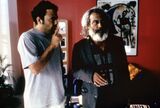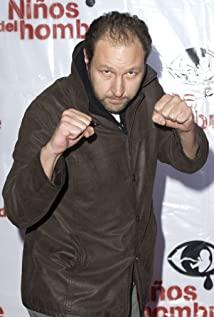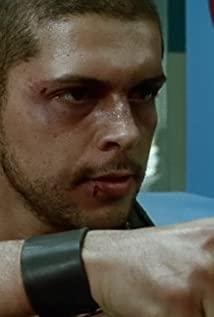While watching Gonzalez Inarido's Amores Perros (2000), I noticed that Gonzalez Inarido used a car accident to connect three seemingly accidental stories, How fun this is. The triptych begins with a distinct feel for three separate stories, but then gradually connects to each other through the intersection of its characters, dogs, and plot. All of this takes place in Mexico City, and the first story, Octavio y Susana, is about Octavio and his Rottweiler, Cofi. He fell in love with his brother's wife, Suzanne, and to convince her to run away with him, he got involved in a local dog fight. The second, Daniel y Valeria, follows the tragic breakdown of Daniel and supermodel Valeria after their relationship is severely injured in a car accident, and the disappearance of her beloved dog Richie only heightens their tension and leads to destruction. El Chivo y Maru tells the story of an outcast named El Chivo, a professional hitman who abandoned his daughter for partisan sports and now tries to apologize and regain his dignity.
Just as Inaritu focuses on describing how the characters deal with loss, regret, and the harsh realities of life in the name of love, the dog grabs a lot of attention in this film. The parallel between the fate of dogs and that of their owners is a striking correspondence. Octavio's dog Coffey, like his owner, was born in a working-class neighborhood and was forced to fight in these brutal dogfights. It was even shot by Jarocho, injured in a car crash, and ended up as a homeless man. As for Octavio, he struggled to win all the races so he could earn enough money to run off with Suzanne, and was later injured and robbed in a car accident, rejected by his lover. A strong will to survive could not overcome the fate of both of them. Valeria's dog Richie has a life of luxury, but still falls unexpectedly under a shattered floor. And its "mother" Valeria, once a red supermodel who lived a luxurious life, was amputated after a car accident. Al-Chivor's mongrels were killed by Coffey, who their owners took their time to care for. As for El-Chivor, the lonely, unattended outcast, who lives by killing people and agonizing over his every regretful decision.
Gonzalez-Inarido paints dogfights with violent, bloody, disturbing shots that symbolize human struggle and suffering. Dogs have always been seen as loyal, beloved companions to humans; we all think of dogs as creatures that we can pet, control, and even manipulate. Their fate is in our hands. However, I believe what Inaritu is trying to convey is that humans are not superior to dogs as far as our destiny is concerned. Fate is inevitable. When we think we've got things in control (at least our dogs), there are still omnipotent forces that control us. All three stories start out in chaos, go through twists and turns, and end in a soothing way.
One of the things I like about Gonzalez-Inarido's storytelling is his ability to design such different storylines that come across by chance, and then have them entangle and complement each other, telling a common theme or a few common ideas.
View more about Love's a Bitch reviews











